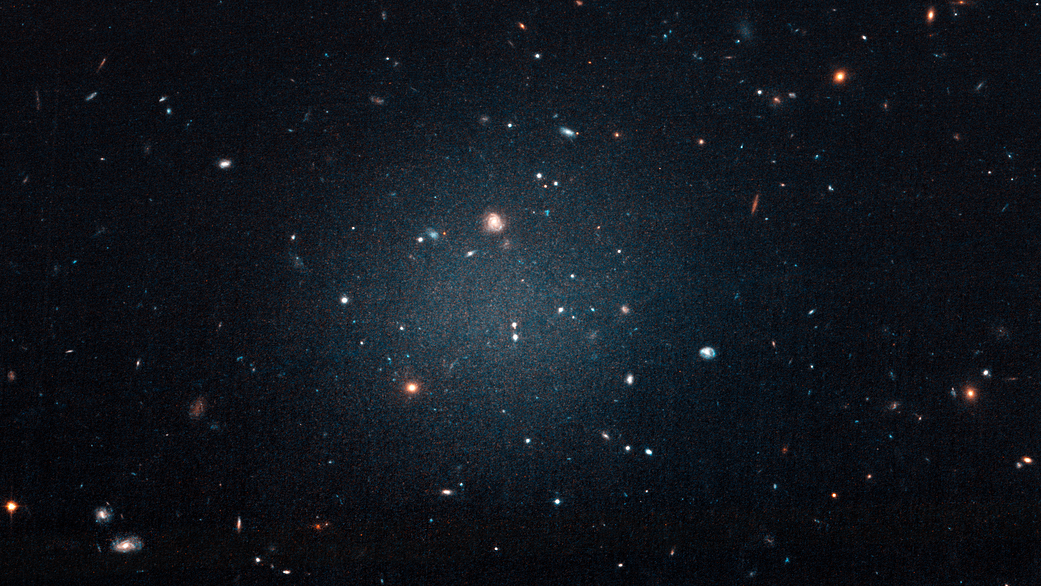Galaxies and dark matter go together like peanut butter and jelly. Rarely is one without the other, but a recently discovered galaxy called NGC 1052-DF2 is nearly entirely lacking in dark matter.
In November 2019, researchers were astonished when they viewed its image captured by the Hubble Space Telescope. Dark matter is an invisible substance that astronomers believe plays an important role in the formation of galaxies and is thought to comprise 85 percent of the universe’s mass. This discovery not only challenges the ideas of how galaxies form, but also provides evidence that dark matter is real. It shows that dark matter is not always coupled with regular matter in galaxies and that it has its own separate existence. In addition to lacking dark matter, galaxy NGC 1052-DF2 is an anomaly because you can see straight through it. This is called an ultra-diffuse galaxy because it has an extremely low density. As a result of these findings, a team of researchers are hunting for more dark-matter deficient galaxies to better understand the nature of dark matter and the formation of galaxies.
Image Credit: NASA, ESA, and P. van Dokkum (Yale University)
星系和暗物质就像花生酱和果冻一样密不可分。两者缺一不可,但最近发现的一个名为NGC 1052-DF2的星系几乎完全缺乏暗物质。
2019年11月,当研究人员在观看哈勃太空望远镜拍摄的它的图像时,他们感到震惊。暗物质是一种不可见的物质,天文学家认为它在星系的形成中扮演着重要的角色,并被认为构成了宇宙质量的85%。这一发现不仅挑战了关于星系如何形成的想法,而且也提供了暗物质存在的证据。它表明暗物质并不总是与星系中的常规物质结合在一起,它有自己独立的存在。除了缺乏暗物质,NGC 1052-DF2星系也是一个异常星系,因为你可以直接看到它。这被称为超稀疏星系,因为它的密度极低。由于这些发现,一组研究人员正在寻找更多缺乏暗物质的星系,以更好地了解暗物质的性质和星系的形成。
了解更多。
图片来源: NASA, ESA和P. van Dokkum(耶鲁大学)







